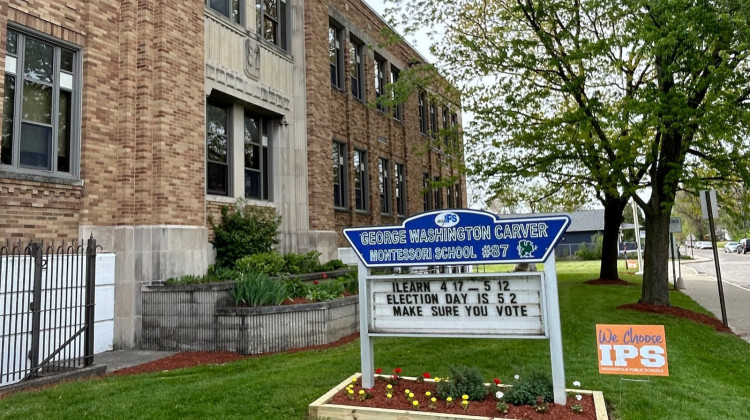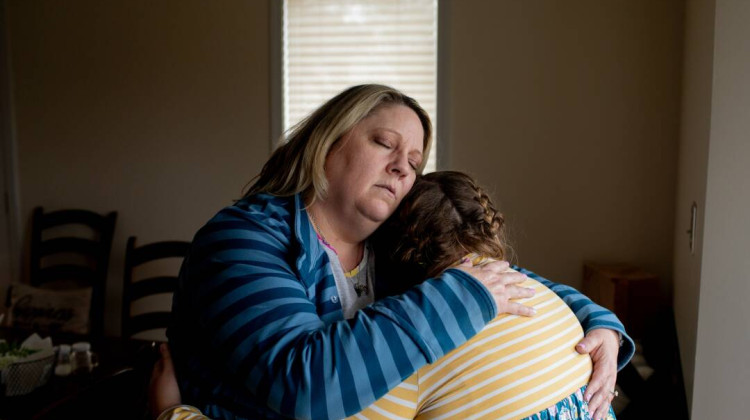
The study, which was commissioned by the Indiana Chamber Foundation, said small school districts with lower per-student funding and high overhead costs struggle to provide students with the same opportunities afforded in larger districts.
biologycorner/FlickrA new study expanding on research from Ball State’s Center for Business and Economic Research shows students in smaller Indiana school districts receive lower scores on some assessments and have less choice in course offerings than students in larger schools.
The study said more than half of Indiana districts are below the stated ideal of 2,000 students.
The study, which was commissioned by the Indiana Chamber Foundation, said small school districts with lower per-student funding and high overhead costs struggle to provide students with the same opportunities afforded in larger districts.
The study said small districts offer fewer Advanced Placement courses and have lower graduation rates, ILEARN, IREAD-3 and SAT scores than larger schools.
Outgoing Indiana Chamber of Commerce President and CEO Kevin Brinegar said students should be well-rounded and prepared for college or the workforce once they leave school.
“The chamber’s interest in this through our foundation is that this is our future workforce for our members and for our employers,” he said. “There's evidence that, because of having so many small school districts, Indiana is effectively running a two-tiered education system. We want to bring attention to that. We want to suggest to the General Assembly and the next governor that this is something they should be paying attention to and look at and be concerned about.”
Brinegar said state lawmakers could take steps to create multi-school teaching positions and incentivize school consolidations to support small districts.
“A county like Randolph County that only has 25,000 people total probably doesn't need five school superintendents and five food service directors and five transportation directors,” he said.
He added that STEM centers could also expand options for students in small schools.
“You have high quality STEM teachers, science, math, technology teachers, in one location, and kids come in from surrounding districts maybe once or twice, one or two days a week,” Brinegar said. “Then they go to their regular high school the other times.”
Brinegar said areas with small schools can be “choice deserts” because there are often few other options. If parents are unhappy with their public schools, there might not be charter schools or private schools in the area to transfer their kids to instead. He said that can leave parents feeling like they have no other choice.
“Something like 94 percent of all these small districts are contiguous to another small district. They could collaborate or even consolidate,” Brinegar said.
However, he said there should be local choice in decisions like school consolidation.
“I want to be very clear. The chamber is not advocating for forced consolidation,” he said. “We think that the General Assembly should think about incentives for that and other things, but we're not saying that that anybody should be forced to consolidate with an adjoining district.”
Indiana Small and Rural Schools Association Executive Director Christopher Lagoni said lawmakers should support small districts, but leave large decisions like district consolidation to local communities.
“We think it should be a choice. We think the state should provide resources like grants to study the topic if they want to do that,” he said. “The last time we funded grants, we had school consolidation. Rockville and Turkey Run were consolidated based on, A: the local community wanted to do it; and B: funding from the [Indiana Department of Education].”
Find more answers on engaging with state government by visiting our project: Civically, Indiana.
Lagoni said even if districts want to consolidate, there can be hurdles to completing the process without extensive help from the state. Some rural schools that are spread far apart geographically must build new centralized locations, which can cost millions of dollars.
He said existing debt can be another hurdle. If one districts is in debt due to factors like declining enrollment or losing a referendum, other districts might choose not to consolidate. He said lawmakers should consider forgiving some districts’ debts if they decide to encourage consolidation.
Lagoni said one of the biggest concerns with district consolidation is that it reduces school choice in rural areas that are already limited in options.
“Really, it's an equity issue. If you're going to be a lawmaker from a rural area and you're going to tell your community you get less choice, but the people in Indianapolis and South Bend, in Fort Wayne, get more choice, how is that equitable?” he said.
Lagoni also said it is important to acknowledge that small districts in Indiana excel in areas like career and technical education, which has been emphasized by lawmakers in recent years.
“The small schools are leading the state in their overall percentage of students participating in CTE/dual credit courses, and we think this reflects the policy push the state has,” he said.
Lagoni added that data from the Ball State study should be analyzed critically because some small schools had higher rates of third graders pass the IREAD-3 in 2022.
“If you took the report and said, let's do a report and document which schools are doing the best job of implementing CTE, vocational and dual credit in the state, I would say so far it's the smaller school districts,” he said. “If you look at the other lens and ask which school districts offer the most AP and have more course offerings and the highest SAT scores, I think we're going to say suburban districts.”
Lagoni said that difference in priorities has caused schools to measure success in different ways.
“For the last 10 to 12 years, [small schools] have made the choice to implement CTE in vocational programs,” he said. “Now, that policy is open to debate, but that's what's been coming out of Indianapolis. And that's what they have tried to do. The results from the report show they're doing it.”
Kirsten is the Indiana Public Broadcasting education reporter. Contact her at kadair@wfyi.org or follow her on Twitter at @kirsten_adair.
 DONATE
DONATE






 Support WFYI. We can't do it without you.
Support WFYI. We can't do it without you.